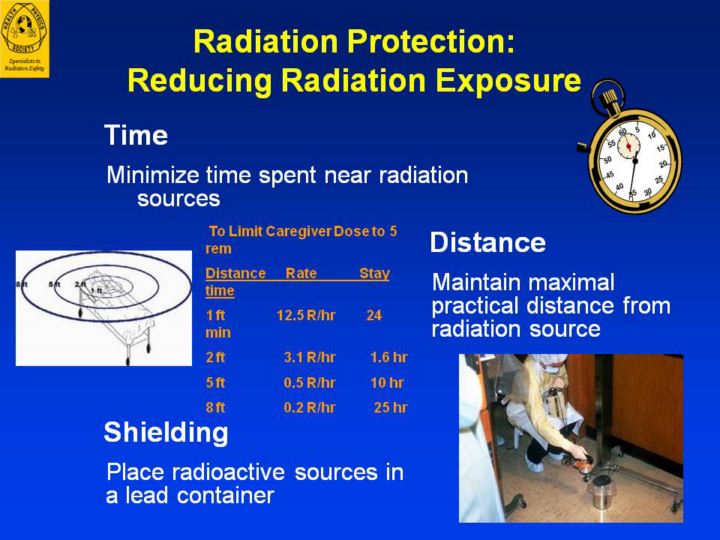| front |1 |2 |3 |4 |5 |6 |7 |8 |9 |10 |11 |12 |13 |14 |15 |16 |17 |18 |19 |20 |21 |22 |23 |24 |25 |26 |27 |28 |29 |30 |31 |32 |33 |34 |35 |36 |37 |38 |39 |40 |41 |42 |43 |44 |45 |46 |47 |48 |review |
 |
Reducing Radiation Exposure
There
are three methods for reducing radiation exposure: time, distance, and
shielding. All three of these methods can be used to keep radiation
exposure to a minimum.
The
longer a person is exposed to a radiation source, the higher will be the
dose received. To minimize the dose, reduce the time of exposure to the
radiation. For example, ED nurses who do not have to stand beside a
contaminated patient can minimize exposure by stepping close to the
patient only when assistance is needed and stepping away as soon as they
are done.
In
addition to minimizing the exposure time, the nurse can further reduce
exposure by taking advantage of distance. Radiation dose rate falls off
very quickly as the distance between the radiation source and the
individual is increased. Time and distance are effective methods of
minimizing dose.
Another
method of minimizing dose is through the use of shielding. Radiology
personnel use leaded aprons to shield themselves from the x-rays that
are scattered from the patient undergoing an x-ray procedure. Leaded
aprons are not recommended and usually provide little shielding
protection from the types of radiation expected from contaminated
patients. An effective way to use shielding is to place radioactive
materials removed from patients into lead containers called pigs. The
thick lead walls of these containers absorb the radiation from the
radioactive material.
|